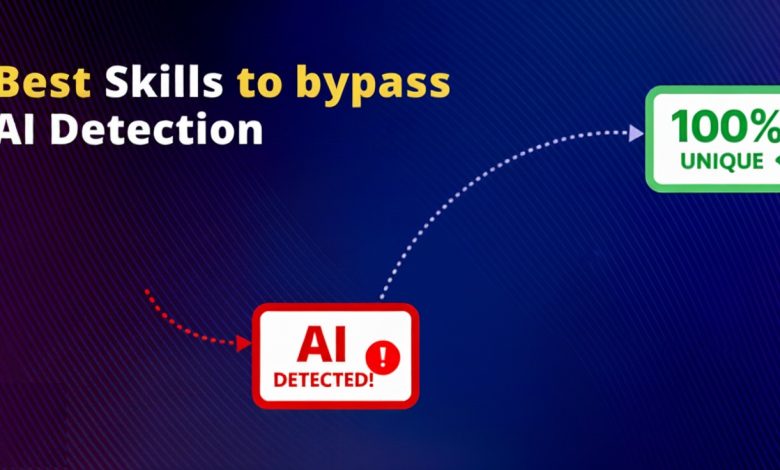
In an era where artificial intelligence can draft emails, write reports, and generate entire articles, a new challenge has emerged: the AI detector. These tools, designed to identify machine-generated text, can flag content as inorganic, potentially undermining its credibility and impact. The key to navigating this new landscape isn’t to avoid using AI, but to master the human art of editing.
Transforming AI output into text that feels genuinely human requires a nuanced understanding of language; a process that is less about deception and more about refinement and authenticity.
The goal is not to create a perfect paraphrase of the AI’s work, but to inject the subjective, occasionally imperfect, and always variable touch of a human writer. This involves moving beyond simple synonym swaps and engaging in the deeper, structural changes that characterize expert human communication. For a deeper dive into the mechanics of these systems, you can read more about how AI detectors analyze text on AIJourn.
The Core Skills for Humanizing AI Text
To effectively edit AI-generated content and ensure it passes through AI detectors undetected, focus on developing the following skills:
Vary Sentence Structure and Flow
AI often produces text with a consistent, predictable rhythm. Human writing, by contrast, is varied. We use short, punchy sentences for impact and longer, more complex ones to elaborate on an idea. When editing, actively break up long sentences and combine short, choppy ones.
Change the order of clauses and introduce rhetorical flourishes that an AI, trained on probability, would be unlikely to generate. This technique is crucial for creating content that reads naturally, a topic we’ve explored in our look at the evolution of AI writing styles.
Inject a Consistent Voice and Tone
One of the most telling signs of AI content is a generic, anonymous tone.
Ask yourself: Who is speaking? Is the voice authoritative, conversational, skeptical, or enthusiastic? Weave this perspective throughout the text.
Use contractions where appropriate, add subtle opinions framed as personal observations, and ensure the tone matches the intended audience, much like the principles of plain language that prioritize the reader’s understanding and experience. This also touches on important questions of authenticity and ethics in AI-generated content.
Employ Strategic Rephrasing, Not Just Synonyms
As the educational models of paraphrase teach, true rewriting involves more than finding different words. It’s about altering the entire construction of an idea. Instead of just replacing “utilize” with “use,” restructure the sentence from the ground up. A powerful tool for this kind of strategic rephrasing is a sophisticated online tool like The Reword, which can help you explore diverse syntactic structures while preserving the original meaning. This approach aligns with expert advice from university writing centers, which emphasize that effective paraphrasing requires a full comprehension of the source material.
Introduce Controlled Imperfection
Human writers make elegant errors; AI strives for sterile perfection. Occasionally, start a sentence with “And” or “But.”
A well-placed colloquialism or a minor, grammatically acceptable inconsistency can do more to signal “human” than any perfectly structured paragraph.
This is the opposite of the rigid, cliché-ridden style of journalese or the vapid, obfuscating nature of corporate jargon; it is the mark of a natural, thinking mind. Famous authors like Stephen King have often discussed the importance of breaking rules to find a more authentic voice.
Strengthen Narrative and Logic
AI can assemble facts, but it often struggles with a compelling narrative arc or a watertight logical throughline. As you edit, ensure that each paragraph flows logically to the next. Use transitional phrases that show causation, contrast, or continuation. Ask yourself if the argument builds persuasively or if the story being told is engaging. This mirrors the discourse-based changes identified in paraphrase studies, where the overall structure of the argument is reordered for better clarity and impact. This skill is essential for anyone using AI for long-form content creation.
Add Specific, Concrete Details
AI generalizations are a major red flag for detectors. Where the AI text says “various methods,” replace it with one or two specific examples. If it mentions “a certain company,” name it. Concrete details not only make content more trustworthy and engaging but are also a hallmark of human authorship, as we draw from our unique reservoir of knowledge and experience.
The Purdue Online Writing Lab offers excellent resources on how to incorporate specific evidence to strengthen your writing.
The Ethical Editor
It is crucial to distinguish between editing to humanize and editing to deceive. The techniques described here are intended to improve the quality, readability, and authenticity of AI-assisted content. They are the digital equivalent of a manager refining a draft from a junior colleague—the core ideas remain, but the expression is polished and personalized. This process aligns with the ethical aims of the plain language movement, which seeks to make communication clearer and more accessible, not to manipulate or hide the truth using weasel words or propagandistic spin.
Bottom Line:
Ultimately, the best way to bypass an AI detector is to no longer be writing like an AI. By applying these human-centric editing skills, you elevate machine-generated text into something with personality, nuance, and genuine value transforming a useful first draft into a final product that truly connects with its readers.

